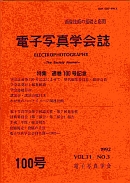Volume 29, Issue 4
Displaying 1-12 of 12 articles from this issue
- |<
- <
- 1
- >
- >|
-
1990Volume 29Issue 4 Pages 366-372
Published: 1990
Released on J-STAGE: March 14, 2008
Download PDF (808K) -
1990Volume 29Issue 4 Pages 373-383
Published: 1990
Released on J-STAGE: March 14, 2008
Download PDF (2468K) -
1990Volume 29Issue 4 Pages 384-389
Published: 1990
Released on J-STAGE: March 14, 2008
Download PDF (487K) -
1990Volume 29Issue 4 Pages 390-395
Published: 1990
Released on J-STAGE: March 14, 2008
Download PDF (507K) -
1990Volume 29Issue 4 Pages 396-400
Published: 1990
Released on J-STAGE: March 14, 2008
Download PDF (2008K) -
1990Volume 29Issue 4 Pages 402-404
Published: 1990
Released on J-STAGE: March 14, 2008
Download PDF (816K) -
1990Volume 29Issue 4 Pages 405-406
Published: 1990
Released on J-STAGE: March 14, 2008
Download PDF (307K) -
1990Volume 29Issue 4 Pages 407-409
Published: 1990
Released on J-STAGE: March 14, 2008
Download PDF (977K) -
1990Volume 29Issue 4 Pages 410-413
Published: 1990
Released on J-STAGE: March 14, 2008
Download PDF (343K) -
1990Volume 29Issue 4 Pages 414-419
Published: 1990
Released on J-STAGE: March 14, 2008
Download PDF (1227K) -
1990Volume 29Issue 4 Pages 420-424
Published: 1990
Released on J-STAGE: March 14, 2008
Download PDF (891K) -
1990Volume 29Issue 4 Pages 425-426
Published: 1990
Released on J-STAGE: March 14, 2008
Download PDF (252K)
- |<
- <
- 1
- >
- >|
